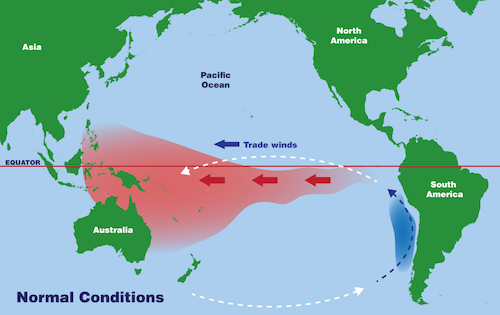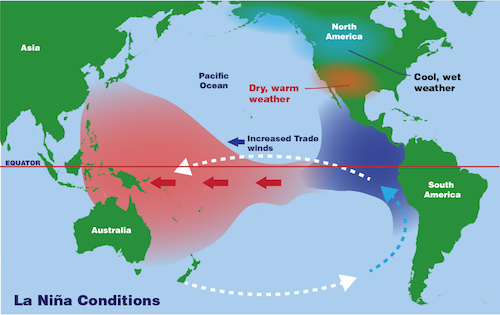- Joined
- Aug 20, 2022
- Messages
- 24,357
- Points
- 113
El Nino to end by June, La Nina seen in second half of 2024, says U.S. forecaster
ReutersThu, May 9, 2024, 10:13 PM GMT+82 min read
May 9 (Reuters) - The El Nino weather pattern should fade out by June but could be replaced by the La Nina phenomenon by the second half of the year, a U.S. government forecaster said on Thursday.
There is a 49% chance that the La Nina weather pattern may develop during the June to August period, rising to 69% in July-September, the National Weather Service's Climate Prediction Center (CPC) said in its monthly forecast.
WHY IT'S IMPORTANT
The cycle between the weather patterns -- which can spawn wildfires, tropical cyclones and prolonged droughts -- is vital to farmers worldwide.
In Latin America, they have affected crops such as wheat, soy and corn, damaging regional economies often highly dependent on farming.
Hot, dry weather in Asia during El Nino last year prompted top rice supplier India to restrict exports following a poor monsoon, while wheat output in No.2 exporter Australia took a hit. But heavier rains in parts of the Americas boosted farm output prospects in Argentina and the southern U.S. Plains.
CONTEXT
The full weather pattern involving El Nino, La Nina and a neutral phase typically lasts between two to seven years.
Experts have warned that Latin American nations must be on high alert as a rapid switch to La Nina this time could leave populations and crops little time to recover.
Australia's weather bureau said last month that the El Nino event has ended.
KEY QUOTES
"La Nina is likely to affect the production of wheat and corn in the US, and soybean, barley, wheat and corn in Latin America including Brazil, Argentina and Uruguay," said Sabrin Chowdhury, head of commodities at BMI.
"The weather phenomenon is associated with long-lasting droughts throughout the Americas region, triggering poor crop quality and a drop in average yields, further exacerbating global supply issues." (Reporting by Anushree Mukherjee and Brijesh Patel in Bengaluru, Editing by Rosalba O'Brien)


